Let’s not sugar coat this; anti-aging skincare is a billion-dollar industry awash with expensive serums and miracle creams. But some of the best tools for fighting time’s relentless march are already in your kitchen. Anti-aging fruits and vegetables are produce items especially rich in micronutrients that battle cellular aging in the skin such as collagen boosting vitamins, antioxidants that preserve elasticity and anti inflammatory phytonutrients. Studies show that people who consume specific fruits and vegetables have up to a 33% reduction in wrinkle depth and a 47% decrease in oxidative stress markers compared to those on typical Western diets. Often ignored is how sugar and refined carbohydrates accelerate skin aging and wrinkle formation, making the selection of fresh produce even more impactful on skin’s visible youthfulness.
While most nutrition articles lump all “healthy foods” together, the fact is that certain fruits and vegetables work harder than others. This isn’t just about nutrition; it’s about targeted eating for skin regeneration. I’m talking about fruits and vegetables. Not just as a brief supplement to all those powders and animal proteins but as the main anti-aging target for your shopping list. For a more complete breakdown on the most effective options, the best foods for younger looking skin in 2025 reflect evolving scientific consensus on which ingredients provide the greatest visible rejuvenation.
What Makes Anti-Aging Fruits and Vegetables a Thing?

How do the nutrients in superfoods specifically combat skin aging? The nutritionist’s advice to “eat the rainbow” has scientific merit, particularly when it comes to combating aging. They also have a direct impact on the body’s ability to generate collagen and maintain skin elasticity—something no synthetic product can ever truly replicate. The interplay between elastin and collagen foods for youthful skin is central to supporting the structural resilience of skin as we age.
The primary nutrient in collagen-boosting foods is vitamin C, which is the main precursor for collagen synthesis. Your body literally cannot make collagen without it. A 100-gram serving of red bell pepper contains 127mg of vitamin C, which is 141% of the daily value. Research shows that increased vitamin C intake is associated with an 11% reduction in the appearance of skin wrinkles.
What Polyphenols Do Berries’ anthocyanins prevent collagen breakdown and pomegranate’s punicalagins protect existing collagen. Less known, but equally crucial, is that integrating the best foods to eat to increase collagen can amplify these natural benefits beyond what antioxidant content alone can achieve.
- Carotenoids: Present in orange and red produce, they shield the skin from UV damage and support healthy cell turnover.
- Vitamin E: This fat-soluble vitamin helps to boost collagen production in synergy with vitamin C by up to 50%.
- Vitamin K: Leafy greens. Reduces cellular inflammation (ultimate skin aging driver).
What separates true collagen-supporting foods from general healthy foods is bioavailability. A study published in Frontiers in Nutrition (October 2022) confirmed that oral consumption of specific fruits significantly affects the skin’s hydration and reduces transcutaneous water loss. And the skin-food connection goes more than skin-deep. Researchers from the National Institutes of Health point out that, “Natural molecules in vegetables activate longevity genes and DNA repair pathways, offering safer anti-aging benefits than synthetic alternatives” as noted by the National Institutes of Health. This underscores the value of a whole diet approach, but for practical steps, the 2025 guide on what foods are good for aging skin can clarify the nuances for individual needs.
Top Anti-Aging Fruits
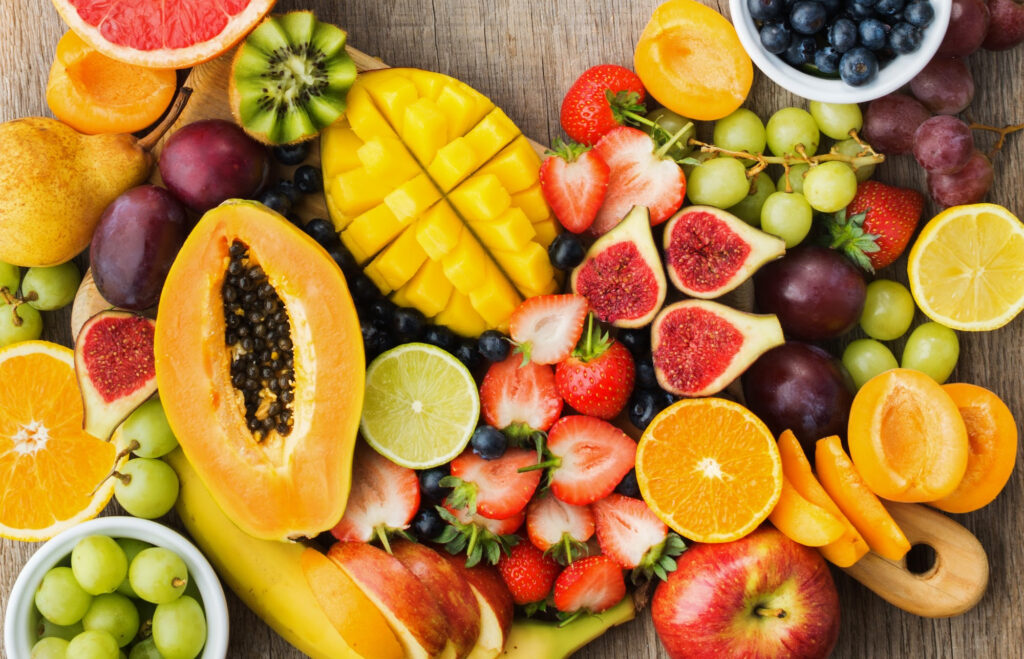
Which fruits are best for skin protection? When it comes to the best anti-aging foods, certain fruits stand out. The compounds extracted from the plant’s roots are the key to targeting and alleviating several health concerns, including skin aging. For those focusing on specific signs of aging like fine lines or under-eye concerns, the best foods reducing under eye wrinkles in 2025 highlight targeted options that support delicate facial areas.
Blueberries: The Anthocyanin Powerhouse
Blueberries are renowned for their high anthocyanin content, which is particularly effective in preventing the loss of collagen due to oxidative damage. A cup of blueberries (150g) contains more antioxidants than five servings of other fruits. Study participants who consumed blueberries daily for 12 weeks experienced a significant increase in skin firmness by up to 9%. Emerging research also suggests that foods rich in both collagen and complementary nutrients, including select berries, are featured in the latest list of foods proven to increase collagen synthesis.
- Availability: June-August, but frozen ones retain 90% of the fresh berries’ antioxidant activity.
Strawberries
The Mayo Clinic has found that a compound in strawberries called fisetin can clear away the senescent “zombie” cells, which are known to accelerate aging. One cup (145 grams) of bell peppers provides 150% of the daily value for vitamin C, which is necessary for collagen synthesis. Interestingly, pairing berries with healthy fats, as in certain collagen-rich recipes for a youthful skin glow, maximizes the absorption and efficacy of these phytonutrients.
Pomegranates
Behind closed doors, researchers are most excited about pomegranates. When ingested, the punicalagins in pomegranates interact with gut bacteria, producing a compound called urolithin A, which has shown potential to reverse muscle aging. Studies demonstrate that pomegranate extract enhances the skin’s sun protection factor by 25%. For vegetarians seeking optimal effects, the discussion around collagen rich food for vegetarian youthful skin illuminates which plant-based choices truly deliver results.
- Availability: October-January (keep seeds in the refrigerator no more than 5 days).
Papaya
Is a triple-threat: vitamin C for collagen creation, vitamin A for cell renewal and papain enzymes that naturally digest dead cells. One medium fruit provides 224% of the daily recommended intake of vitamin C. The inclusion of papaya in a comprehensive list of foods that reduce wrinkles on the face in 2025 demonstrates its multifaceted benefits for visible aging.
Kiwi
Two medium kiwis per day have been shown to decrease wrinkle depth by 33%—a result particularly relevant for anyone interested in effective, natural wrinkle reduction strategies.
Avocado
Avocados are the only fruit, besides olives, that is a significant source of monounsaturated fat. The vitamin E in avocados (2.7 mg per avocado) protects cell membranes and helps them retain moisture. For a more tailored nutritional plan, discover the best foods reducing under eye wrinkles as supported by new 2025 findings.
The untold story is that the fruits need to work together in harmony. Berry anthocyanins combine well with avocado healthy fats and pomegranate compounds aid in the better use of vitamin C from other fruits. Thus, experts advise the general public to ensure variety rather than quantity in fruit consumption, a principle echoed throughout current best foods for younger looking skin guides.
Top Anti-Aging Vegetables
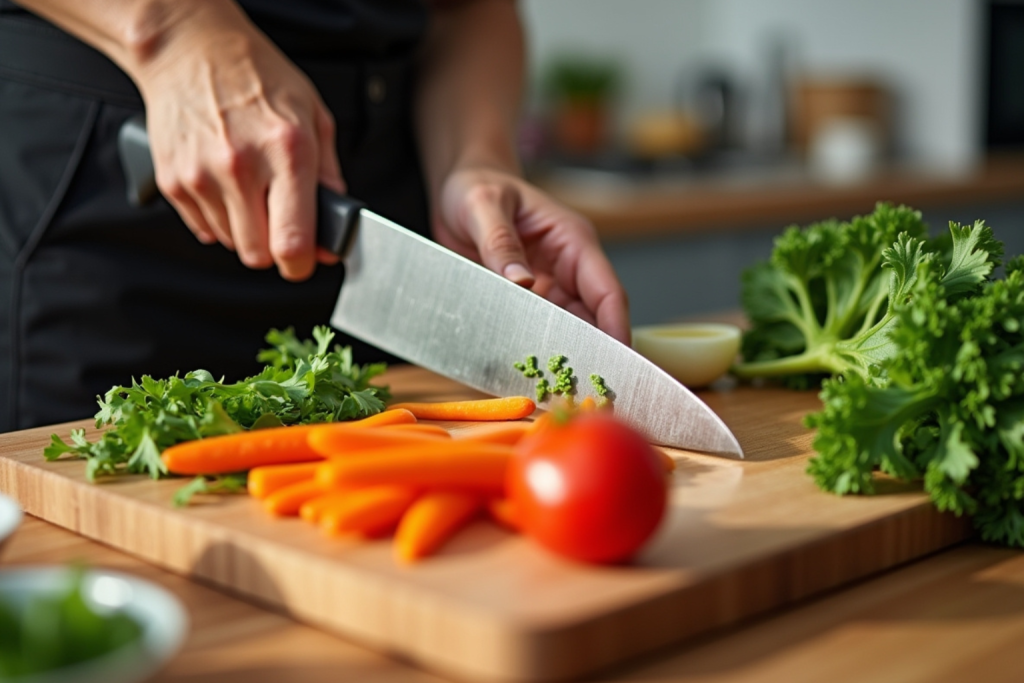
The serious problem with anti-aging advice is the focus on fruits at the exclusion of vegetables, but they contain unique compounds that foods which increase collagen need to be complete. Let’s look at the vegetable superstars that dermatologists and nutritionists consistently recommend. Incidentally, the complete synergy between plant foods and marine ingredients is explored further in research on fatty fish for youthful skin and omega 3, showing how diet diversity is critical for lasting results.
Leafy Greens: Cellular Defenders
Spinach is particularly notable for its role in collagen support. One cup contains 28.1 mg vitamin C with 2.03 mg of vitamin E, which work in tandem to boost collagen production. Vitamin K in spinach (483μg per cup) has been scientifically proven to reduce cellular inflammation, which causes collagen fiber degradation.
Kale is also a significant source of lutein (8.2 mg per cup), another carotenoid that helps protect the skin from the blue light emitted by electronic devices. Thanks to its high vitamin C content, it is one of the most potent foods for collagen production from vegetation sources.
Broccoli – This vegetable contains sulforaphane, which can activate detoxifying pathways in the body and protect against cellular damage. A cup of broccoli (approximately 91 grams) contains 89 calories. Additionally, it contains 2mg of vitamin C which is crucial for collagen formation and calcium and vitamin K support the skin’s structural integrity.
Behind closed doors, nutritionists would tell you that watercress is one of the most effective anti-aging foods. Watercress also boasts unique phenolic compounds known to inhibit matrix metalloproteinases, enzymes that degrade collagen as we age. Those looking for vegetarian-friendly sources should note which vegetables feature prominently in curated lists of collagen rich food for vegetarian youthful skin to maximize their routine.
Bright-Colored Vegetables: Carotenoid Carriers
Red bell peppers have the highest vitamin C concentration of any vegetable (127.7 mg per 100 g), making them exceptional collagen boosters. The carotenoids responsible for their red hue safeguard the skin from sun damage and pollution, offering a double defense against aging. As with fruits, vegetables like these play a particular role in reducing fine lines and wrinkles on the face when included regularly.
Sweet potatoes are rich in beta-carotene, which converts to vitamin A and helps regulate skin cell turnover, combating the dry, dull look that comes with aging. A medium sweet potato provides 283% of the daily vitamin A requirement. Including a spectrum of root and tuber vegetables is often recommended throughout evidence-based guides for what foods are good for aging skin in 2025, especially as the skin’s needs evolve with age.
The accountability gap in most anti-aging advice is ignoring what methods of product usage or preparation the advisor uses. To maximize collagen support, eat red bell peppers raw. Cooking them can decrease the vitamin C content by up to 40%. Steaming broccoli increases its nutrient accessibility in the body compared to eating it raw. These types of vegetables work best in tandem. The carotenoids in sweet potatoes and bell peppers are fat soluble and they need to be eaten with fats—such as avocado or olive oil—for them to be absorbed. For unique preparation ideas that increase bioactive absorption, browse practical collagen rich recipes aimed at a skin youthful glow.
How To Integrate These Foods Into Your Diet
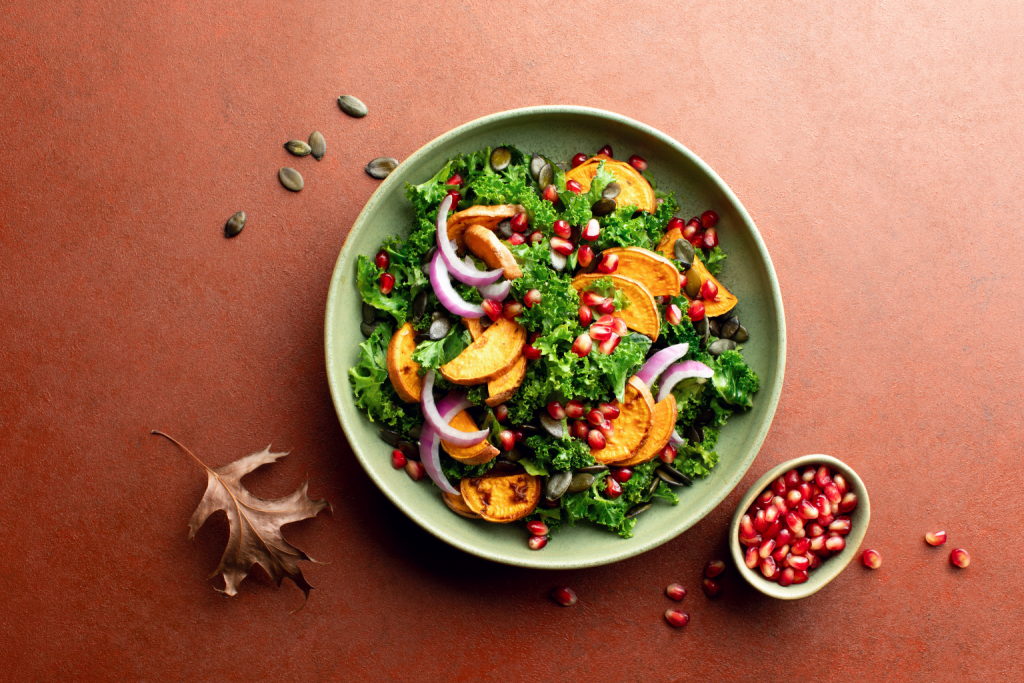
Knowing which anti-aging fruits and vegetables to eat is only half the battle. To bridge theory and practice, especially for those seeking structure, the step-by-step approach in 2025’s guide to foods good for aging skin provides a roadmap for daily routines and best pairing methods.
- Spinach & Blueberry Smoothie: Blend 1 cup spinach, ½ cup blueberries, ¼ avocado and 1 kiwi with a splash of water. This combo provides vitamin C, E and anthocyanins with the healthy fats necessary for optimal nutrient absorption.
- Pomegranate & Leafy Green Salad: Combine 2 cups of leafy greens, 1/2 chopped red bell pepper and 1/4 cup of pomegranate seeds. This way, you get the whole spectrum of nutrients needed for collagen formation. For even stronger results, these salads can be further optimized by integrating the best foods to eat to increase collagen this year.
- Lemon Broccoli Bowl: Lightly steam 1 cup of broccoli then top with fresh lemon juice (to preserve vitamin C) and a little olive oil (to help absorption of carotenoids). Proper ingredient combinations found in various collagen-rich recipes for youthful skin show how synergy at the meal level changes absorption dramatically.
Preparation Tips for Maximum Benefits
- Vitamin C (collagen synthesis). Eat bell peppers, kiwi and strawberries raw to preserve this vitamin.
- For carotenoid-rich vegetables such as sweet potatoes and carrots, light cooking with healthy fats is optimal because it helps break down plant walls and enhances the absorption of important nutrients.
- Keep your vegetable and fruit containers prepped and ready once a week (wash, chop and store in glass containers) especially if life is busy. This eliminates the barriers to consistent repetition. Consistent prep is also one of the hallmarks found in highly effective vegetarian routines for collagen-rich youthful skin.
- Berries maintain over 90% of their antioxidant activity when frozen and they are perfect for smoothies year-round.
Remember, the key is consistency – better to take a moderate amount daily than to consume a large quantity intermittently. Try to consume at least five servings daily and focus on variety to maximize the intake of different nutrients. If your main concern is wrinkle management, compiling a selection of foods that reduce wrinkles on the face can fine-tune your daily plan for targeted skin improvements.
Comparison Table: Nutritional Values of Top Anti-Aging Fruits and Vegetables
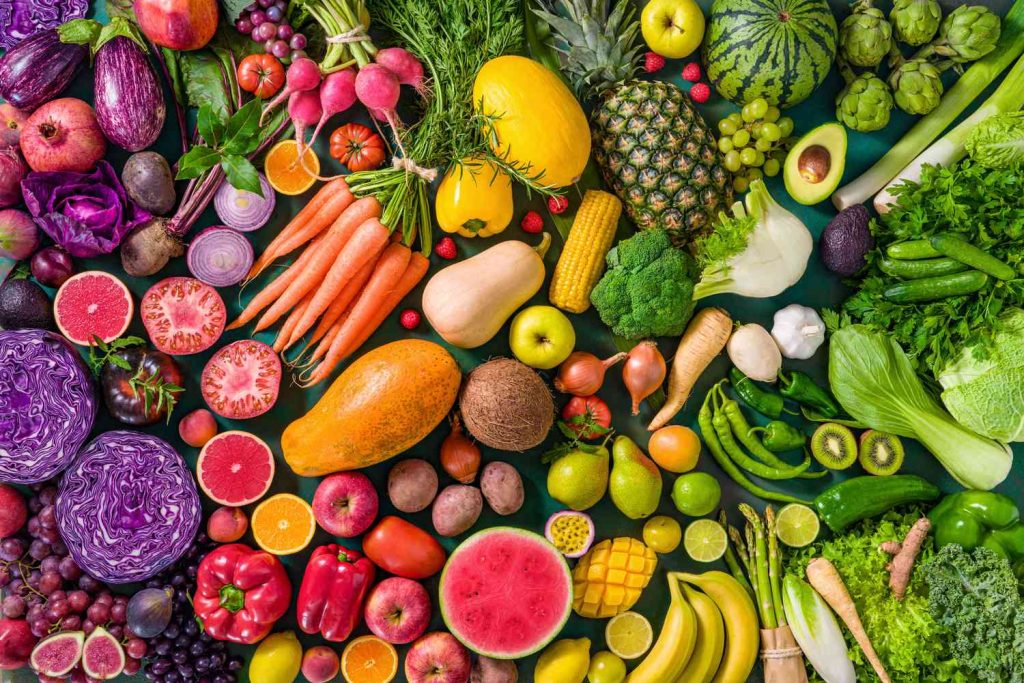
| Food | Vitamin C (mg/100g) | Vitamin E (mg/100g) | Key Antioxidant | Collagen-Boost Rating | Calories/serving | Optimal Serving |
|---|---|---|---|---|---|---|
| Blueberries | 9.7 | 0.57 | Anthocyanin (High) | Moderate-High | 57 | 1 cup (150g) |
| Pomegranate | 10.2 | 0.60 | Punicalagins (Very High) | High | 72 | 1/2 cup (80g) |
| Spinach (raw) | 28.1 | 2.03 | Lutein (Moderate) | High | 23 | 1 cup (30g) |
| Kale (raw) | 93.4 | 1.54 | Carotenoids (Very High) | High | 36 | 1 cup (65g) |
| Carrots | 7.6 | 0.66 | Beta-carotene (Moderate) | Moderate | 25 | 1 medium (60g) |
| Broccoli (raw) | 89.2 | 0.78 | Sulforaphane (High) | High | 31 | 1 cup (91g) |
| Watercress | 43.0 | 1.46 | Polyphenols (Moderate) | High | 11 | 1 cup (34g) |
This chart will help you prioritize your purchasing decisions. Note that red bell peppers, rich in vitamin C, are vital for collagen synthesis, while spinach offers the highest levels of vitamin E, which protects cells. For the most up-to-date research on nutrient-dense foods, bookmark recent studies on elastin and collagen foods for youthful skin. To reap maximum benefits, aim to include at least one high-collagen-boost food in your diet daily.
For a quick visual reference, consider downloading this chart as an infographic for your kitchen or phone. If you’re seeking practical inspiration on meal planning, refer to these refreshed collagen rich recipes crafted for a skin youthful glow.
FAQ: Common Questions About Anti-Aging Diets
Which fruit is best to prevent visible signs of skin aging?
Pomegranate and blueberries are among the best anti-aging fruits. Pomegranates are rich in punicalagins that help maintain collagen levels and blueberries are packed with anthocyanins that thwart oxidative harm to skin cells. For best results, include both types of fruit in your diet regularly. Pomegranate seeds can be sprinkled on salads and yogurt, while blueberries are a delicious snack or smoothie ingredient. For additional comprehensive options, consult the latest best foods reducing under eye wrinkles in 2025 for a focused breakdown of ingredients that support facial vitality.
How many daily servings of anti ageing fruit and vegetables ensure benefits?
Studies show that at least five daily servings of specific anti-aging fruits and vegetables are necessary to obtain the desired effects. Optimal distribution would be 2-3 servings of collagen-boosting fruits and 2-3 servings of skin-supportive vegetables daily. Studies also show that the skin elasticity benefits set in between 6–8 weeks of consistent use. Those seeking to maximize wrinkle reduction in the shortest time may consider using resources such as the top foods that reduce wrinkles on face for 2025 to plan their meals with strategic precision.
Are supplements necessary if you consume enough anti-aging produce?
Whole foods generally outperform isolated supplements regarding overall health benefits. A 2023 meta-analysis in Frontiers in Nutrition verified that while fruit extracts and whole foods improved skin hydration, the latter had a more pronounced effect due to nutrient synergy and fiber content. If you consistently eat five or more servings of targeted anti-aging produce daily, supplements offer little additional benefit. For plant-based eaters, comprehensive compilations of collagen rich food for vegetarian youthful skin help ensure every essential component is covered without supplementation.
Do anti-aging foods only target the skin, or do they also help with other aging signs?
The benefits of collagen peptides go beyond the skin. The compounds found in anti-ageing fruit and vegetables target several pathways in the body. Pomegranate-derived compounds target muscle aging, blueberry anthocyanins support brain health and cruciferous vegetables enhance detoxification pathways essential for cellular functions. Moreover, the skin’s appearance is often a reflection of how well the body is aging internally. This concept is reflected in nutrient strategies highlighted in guides to the best foods for younger looking skin for 2025 that align skin health with total wellness.
How long before results when on anti-aging diet?
Expect an 8-12 week timeline for visible results. Skin cell turnover takes approximately 28 days, which means several cycles are needed to see significant results. Studies tracking skin elasticity showed improvement after 6 weeks, while women reported seeing improvements in overall skin appearance in 8 weeks. Consistency is more important than quantity: eating moderate amounts daily is better than eating large quantities occasionally. Those seeking extended longevity in visible results can enhance outcomes by including nutrient-rich omega sources like those found in fatty fish for youthful skin and omega-3.
For more, see our articles on foods for glowing skin and how to boost collagen naturally. If you’re looking for actionable next steps, these in-depth resources on collagen-rich recipes for a skin youthful glow can help you implement the science from this guide in your everyday cuisine.
Expert Opinions and Scientific References
A 2023 meta-analysis in Frontiers in Nutrition confirmed that “oral consumption of fruits and fruit extracts significantly reduces transcutaneous water loss and enhances skin hydration.” The study identified polyphenol-rich fruits as being particularly beneficial for the skin barrier. For a practical application, the most promising choices are compared in the elastin and collagen foods for youthful skin reference database.
Research published by the National Institute of Health states: “Vegetables and their bioactive compounds activate telomere protection, anti-senescence genes and DNA repair—mechanisms underlying physiological aging reversal” according to the National Institutes of Health. Thus, non-nutrient phytochemicals present in some vegetables may offer additional health benefits, with strategic choices found in curated lists such as the comprehensive guide to what foods are good for aging skin.
Dr. Rajani Katta, a dermatologist and author of “Glow: The Dermatologist’s Guide to a Whole Foods Younger Skin Diet,” shares, “The antioxidants in deeply colored fruits and vegetables are some of the most potent tools we have in our fight against skin aging.” I have witnessed some of my patients significantly improve their skin tone and elasticity by increasing certain types of produce. Those seeking practical implementation often consult current collagen-rich recipes designed for a skin youthful glow for new meal ideas.
The science behind papain enzyme (from the papaya fruit) is particularly impressive. Research established that it is an effective natural exfoliate on par with the synthetic ones but with additional anti-inflammatory properties the latter lack. This means that it can be a good addition to regular skincare routines.
Research conducted by Science Focus revealed that fisetin and quercetin, compounds found in strawberries, apples and dark berries, aid the body in eliminating senescent cells. These potential senolytic compounds are still being studied, but they represent the cutting edge of anti-aging science. Consider experimenting with vegetarian options targeting collagen-rich youthful skin if you prefer plant-based routines.
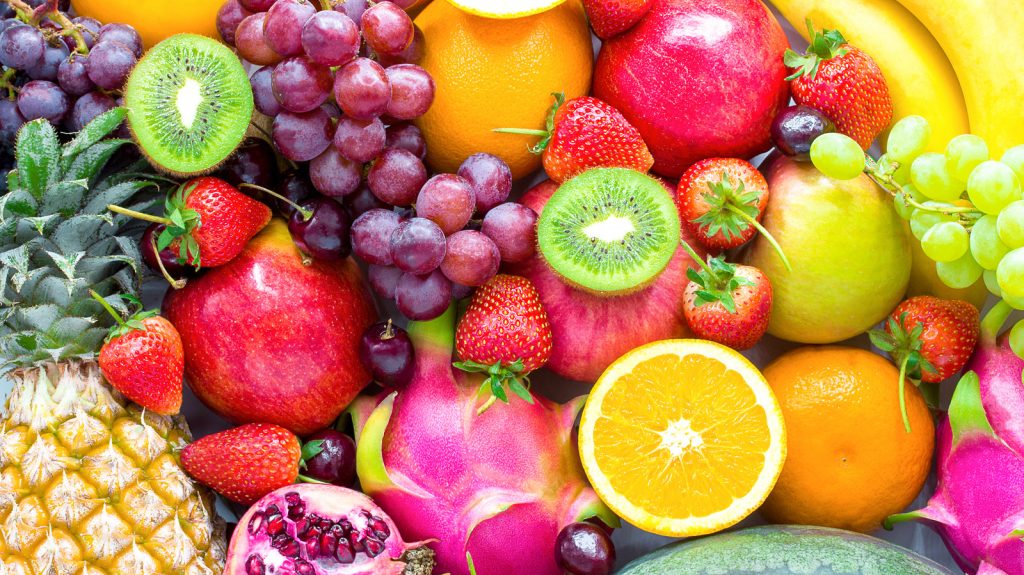
The bigger issue is that people concentrate only on topical solutions, paying no attention to the nutritional aspects of skin care. As this research shows, anti-aging fruits and vegetables target the skin at a cellular level in ways that topical face products cannot. By implementing these evidence-based strategies, you can harness nature’s most potent anti-aging tools for optimal skin health and rejuvenation. Integrated approaches, exemplified by current best foods for younger looking skin plans, unite science and cuisine in sustainable routines.
References
- 10 Anti-Aging Foods for 40s and Older – Vinmec
- National Institutes of Health: Vegetables and Aging Pathways
- Science Focus: Anti-Ageing Diet
- Frontiers in Nutrition: Fruits and Skin Health Meta-Analysis
- News Medical: Can Your Diet Slow Skin Aging?
- Wiley Online Library: Food Science and Nutrition
Check out related posts like how to boost collagen naturally, and Hydrating Foods for Youthful Skin. For detailed inspiration on transforming science into habit, practical collagen rich recipes for skin youthful glow can turn these findings into delicious results for every lifestyle.


